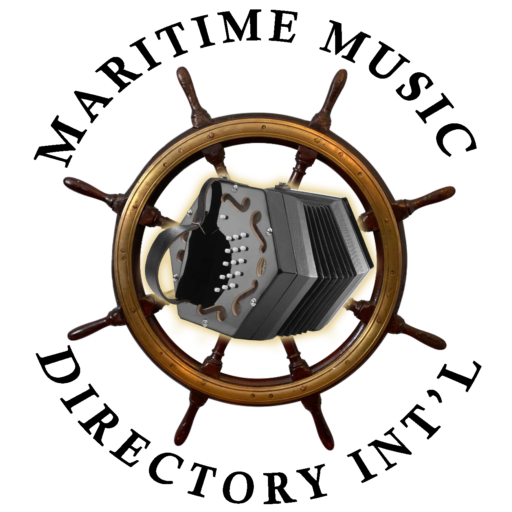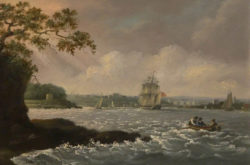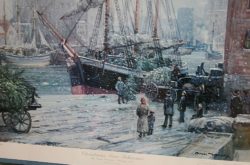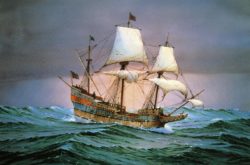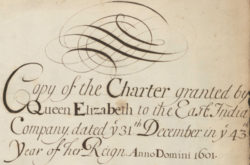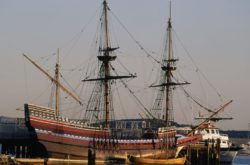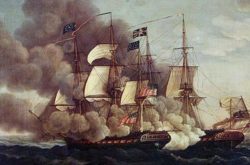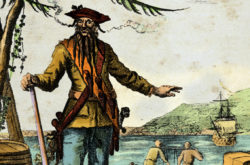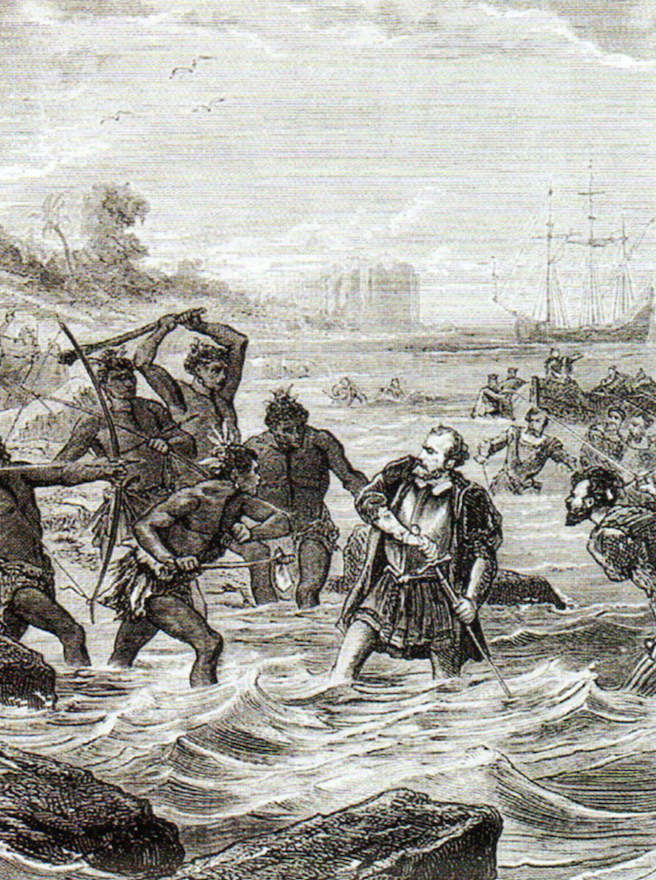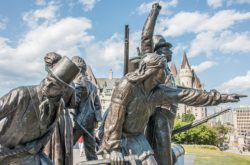Charles Darwin sets sail from England (27 Dec 1831)
British naturalist Charles Darwin sets out from Plymouth, England, aboard the HMS Beagle on a five-year surveying expedition of the southern Atlantic and Pacific oceans. Visiting such diverse places as the Galapagos Islands and New Zealand, Darwin acquired an intimate knowledge of the flora, fauna, and geology of many lands. This information proved invaluable in the development of his theory of evolution, first put forth in his groundbreaking scientific work of 1859, On the Origin of Species by Means of Natural Selection. Read the complete article on History.com.
Christmas Tree Ship Sinks (1912)
On this day (23 Nov) in 1912, the schooner ROUSE SIMMONS, better known as the Christmas Tree Ship, foundered in Lake Michigan near Two Rivers, Wisconsin. There were no survivors. The ROUSE SIMMONS was a 3-masted schooner built in 1868 by Allen, McClelland & Company of Milwaukee. She was 124 feet long with a 27.5-foot beam, and named after a well-known Kenosha merchant. She spent much of her career on Lake Michigan hauling lumber for Charles Hackley of Muskegon, Michigan. Read the complete article in the State of Michigan publication MLive.com.
Sir Francis Drake Sets Sail (1577)
English seaman Francis Drake sets out from Plymouth, England, with five ships and 164 men on a mission to raid Spanish holdings on the Pacific coast of the New World and explore the Pacific Ocean. Three years later, Drake’s return to Plymouth marked the first circumnavigation of the earth by a British explorer.After crossing the Atlantic, Drake abandoned two of his ships in South America and then sailed into the Straits of Magellan with the remaining three. A series of devastating storms besieged his expedition in the treacherous straits, wrecking one ship and forcing another to return to England. Only The Golden Hind reached the Pacific Ocean, but Drake continued undaunted up the western coast of South America, raiding Spanish settlements and capturing a rich Spanish treasure ship. Read the complete article on History.com.
Charter granted to the East India Company (31 Dec 1600)
On December 31, 1600, Queen Elizabeth I of England grants a formal charter to the London merchants trading to the East Indies, hoping to break the Dutch monopoly of the spice trade in what is now Indonesia. In the first few decades of its existence, the East India Company made far less progress in the East Indies than it did in India itself, where it acquired unequaled trade privileges from India’s Mogul emperors. By the 1630s, the company abandoned its East Indies operations almost entirely to concentrate on its lucrative trade of Indian textiles and Chinese tea. In the early 18th century, the company increasingly became an agent of British imperialism as it intervened more and more in Indian and Chinese political affairs. The company had its own military, which defeated the rival French East India Company in 1752 and the Dutch in 1759. Read the complete article on History.com.
Mayflower docks at Plymouth Harbor (1620)
On December 18, 1620, the British ship Mayflower docked at modern-day Plymouth, Massachusetts, and its passengers prepared to begin their new settlement, Plymouth Colony. The famous Mayflower story began in 1606, when a group of reform-minded Puritans in Nottinghamshire, England, founded their own church, separate from the state-sanctioned Church of England. Accused of treason, they were forced to leave the country and settle in the more tolerant Netherlands. After 12 years of struggling to adapt and make a decent living, the group sought financial backing from some London merchants to set up a colony in America. On September 6, 1620, 102 passengers–dubbed Pilgrims by William Bradford, a passenger who would become the first governor of Plymouth Colony–crowded on the Mayflower to begin the long, hard journey to a new life in the New World. Read the complete article on History.com.
Continental Congress Creates a Continental Navy (1775)
On Friday, December 22, 1775, the Continental Congress creates a Continental Navy, naming Esek Hopkins, Esq., as commander in chief of the fleet. Congress also named four captains to the new service: Dudley Saltonstall, Abraham Whipple, Nicholas Biddle and John Burrows Hopkins. Their respective vessels, the Alfred, Columbus, Andrew Doria and Cabot, became the first ships of the Navy’s fleet. Five first lieutenants, including future American hero John Paul Jones, five second lieutenants, and three third lieutenants also received their commissions. Read the complete article on History.com.
Blackbeard Killed off North Carolina (1718)
Edward Teach, also known as Blackbeard, is killed on November 22, 1718, off North Carolina’s Outer Banks during a bloody battle with a British navy force sent from Virginia. Believed to be a native of England, Edward Teach likely began his pirating career in 1713, when he became a crewman aboard a Caribbean sloop commanded by pirate Benjamin Hornigold. In 1717, after Hornigold accepted an offer of general amnesty by the British crown and retired as a pirate, Teach took over a captured 26-gun French merchantman, increased its armament to 40 guns, and renamed it the Queen Anne’s Revenge. During the next six months, the Queen Anne’s Revenge served as the flagship of a pirate fleet featuring up to four vessels and more than 200 men. Teach became the most infamous pirate of his day, winning the popular name of Blackbeard for his long, dark beard, which he was said to light on fire during battles to intimidate his enemies. Blackbeard’s pirate forces terrorized the Caribbean and the southern coast of North America and were notorious for their cruelty. In May 1718, the Queen Anne’s Revenge and another vessel were shipwrecked, forcing Blackbeard to desert a third ship and most of his men because of a lack of supplies. With the single remaining ship, Blackbeard sailed to Bath in North Carolina and met with Governor Charles Eden. Eden agreed to pardon Blackbeard in exchange for a share of his sizable booty. Read the complete article here.
Magellan Reaches the Pacific Ocean
After sailing through the dangerous straits below South America that now bear his name, Portuguese navigator Ferdinand Magellan enters the Pacific Ocean with three ships, becoming the first European explorer to reach the Pacific from the Atlantic. On September 20, 1519, Magellan set sail from Spain in an effort to find a western sea route to the rich Spice Islands of Indonesia. In command of five ships and 270 men, Magellan sailed to West Africa and then to Brazil, where he searched the South American coast for a strait that would take him to the Pacific. He searched the Rio de la Plata, a large estuary south of Brazil, for a way through; failing, he continued south along the coast of Patagonia. At the end of March 1520, the expedition set up winter quarters at Port St. Julian. On Easter day at midnight, the Spanish captains mutinied against their Portuguese captain, but Magellan crushed the revolt, executing one of the captains and leaving another ashore when his ship left St. Julian in August. Read the complete article on History.com.
War of 1812 Ends with the Treaty of Ghent
On this date, December 24, 1814, the War of 1812 ends. The Treaty of Peace and Amity between His Britannic Majesty and the United States of America is signed by British and American representatives at Ghent, Belgium, ending the War of 1812. By terms of the treaty, all conquered territory was to be returned, and commissions were planned to settle the boundary of the United States and Canada. Read the complete article on History.com.
